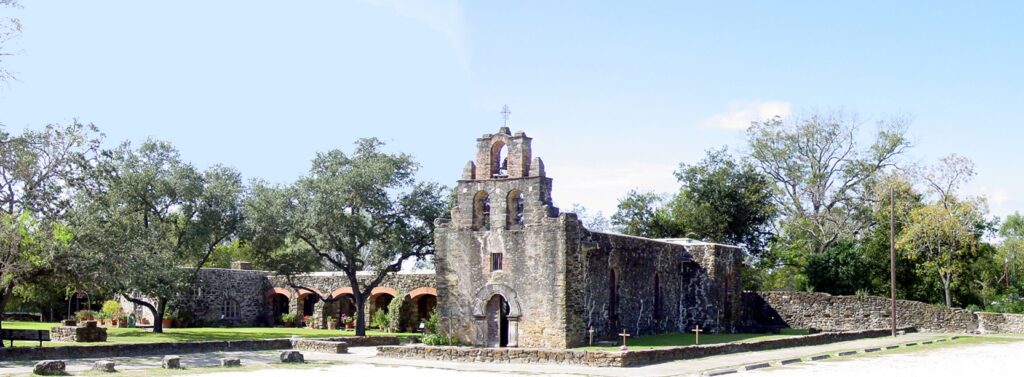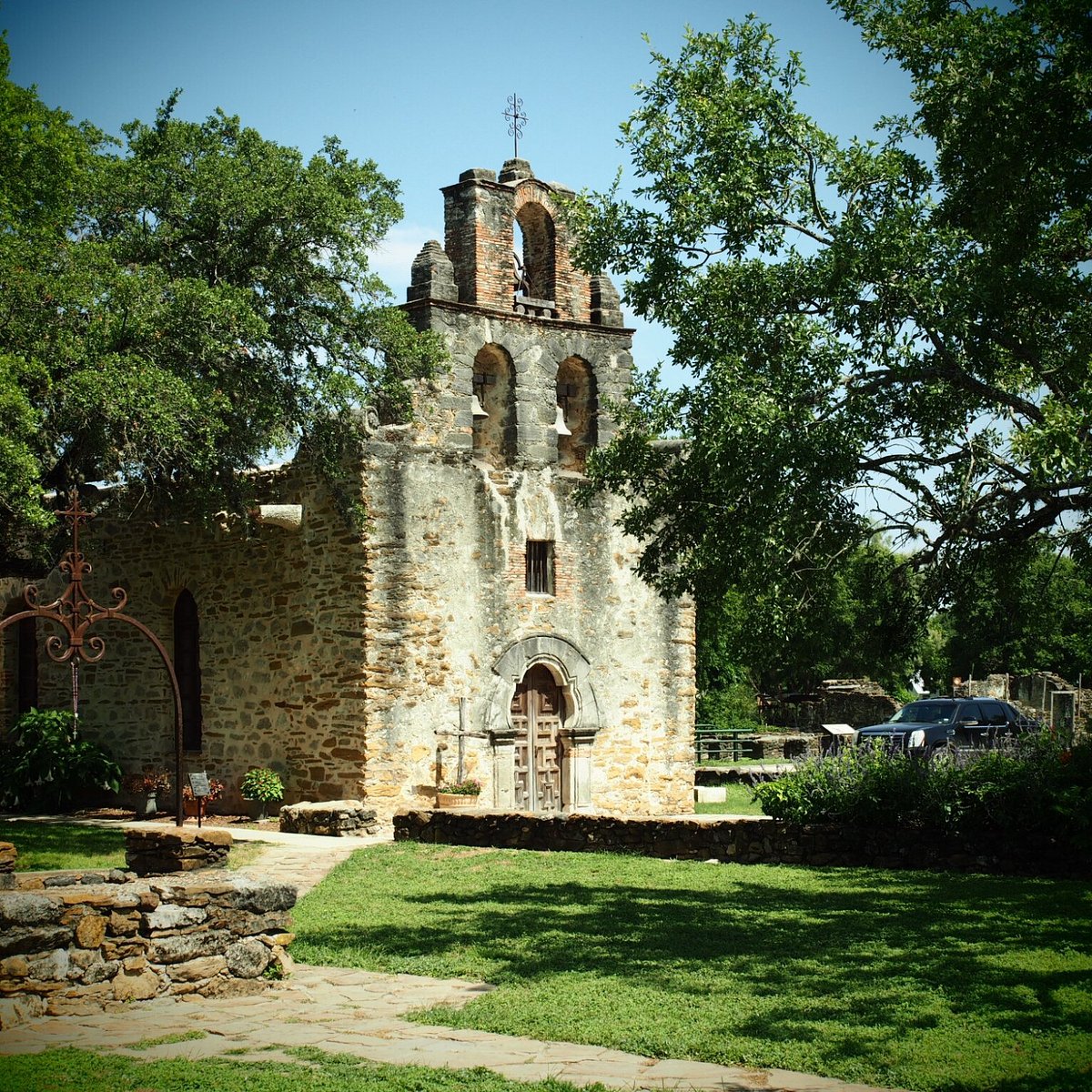Discover San Antonio Missions National Historical Park: A Historical Treasure in TX
Discover San Antonio Missions National Historical Park: A Historical Treasure in TX
Blog Article
Explore the Rich Background of San Antonio Missions National Historical Park: a Comprehensive Guide to Its Cultural Value and Preservation Efforts
As we embark on a trip via the historical history of these missions, we discover building wonders that have endured the examination of time. Beyond the simple physical frameworks, each objective, notably Objective Espada, brings an extensive cultural weight that reverberates deeply with those that explore its grounds.
Historical Background of San Antonio Missions
The origins of the historical background of the San Antonio Missions run deep, linking Spanish early american impact with native cultures in the South Texas area. Developed in the very early 18th century, these objectives were founded by Franciscan friars with the purpose of spreading Christianity and transforming the neighborhood native populaces. San Antonio Missions National Historical Park tours. The Spanish Crown sustained these goals as a way of strengthening control over the area and broadening their impact in the New Globe
The Spanish missionaries played a substantial role in forming the cultural landscape of the area, presenting new agricultural methods, design, and religious techniques. The indigenous communities, such as the Coahuiltecans and various other tribes, interacted with the Spanish inhabitants, resulting in a mixing of beliefs and traditions.
With time, the goals came to be not just religious centers but social and also financial centers, drawing in inhabitants from various histories. Today, the San Antonio Objectives stand as a testament to this complex history, mirroring the sustaining heritage of Spanish manifest destiny and the durability of aboriginal cultures in South Texas.
Building Wonders of the Missions
Having actually laid the structure of social exchange in between Indigenous neighborhoods and spanish missionaries, the building marvels of the San Antonio Missions exemplify a blend of European and aboriginal workmanship that continues to mesmerize visitors. These goals, including Mission San Jose, Goal Concepcion, Goal San Juan, Mission Espada, and the Alamo, showcase distinctive attributes such as luxuriant facades, intricate carvings, colorful frescoes, and tough rock walls. The Spanish Colonial design, defined by arched doorways, belfry, and spacious courtyards, reflects a harmonious blend of Spanish style aspects with aboriginal structure methods.
Each objective within the San Antonio Missions National Historic Park informs an one-of-a-kind story with its design, showing the advancement of building and construction styles and cultural influences gradually. Site visitors can marvel at the competent craftsmanship evident in the thorough stonework, hand-carved wood doors, and spiritual iconography adorning the insides. These architectural work of arts stand as enduring testimonies to the enduring heritage of the goals and the cultural heritage they represent.
Social Importance of Objective Espada
With its historic origins deeply intertwined with the aboriginal cultures of the region, Goal Espada stands as an icon of cultural strength and adaptation within the San Antonio Missions National Historic Park. Founded in 1690, Goal Espada was developed by Spanish Franciscans as a way to spread Christianity amongst the Coahuiltecan people while likewise acting as a facility for farming and sector. The objective's social importance depends on its function as a conference point in between Native and european American traditions, causing a distinct mix of architectural designs, spiritual practices, and agricultural techniques.
Goal Espada's legendary aqueduct, called "Acequia de Espada," is a testament to the engineering skills of both Spanish and native peoples, showcasing their collaboration in building vital waterways for watering functions. This harmonious fusion of cultural influences is further exemplified in the goal's intricate carvings, image source vivid frescoes, and spiritual ceremonies that continue to be practiced to now. As one of the earliest unrestored rock churches in America, Objective Espada stands as a living testimony to the enduring heritage of cultural exchange and adaptation that specifies the San Antonio Missions National Historic Park.
Conservation Difficulties and initiatives
Conservation in maintaining the historical honesty of Goal Espada experiences a myriad of complex challenges that need ingenious options and devoted stewardship. As one of the 5 goals within the San Antonio Missions National Historical Park, Mission Espada encounters conservation concerns coming from environmental factors, urban encroachment, and the continuous fight versus natural wear and tear. The fragile balance between preserving the original frameworks and making sure site visitor accessibility and safety needs thorough preparation and implementation.
Initiatives to protect Objective Espada entail a multi-faceted strategy that consists of regular upkeep, structural assessments, and conservation projects. Partnerships in between park officials, chroniclers, excavators, and neighborhood communities are crucial in developing lasting conservation strategies. Difficulties such as moneying constraints, restricted sources, and the need for specific competence even more make complex preservation initiatives.
In spite of these difficulties, the dedication to securing Goal Espada's historic significance remains undeviating. Through continued study, neighborhood interaction, and adaptive preservation methods, the conservation of Goal Espada stands as a testament to the devotion towards safeguarding our cultural heritage for future generations.
Community Involvement in Park Conservation

One of the primary ways the park entails the community is with volunteer chances. Regional homeowners can take part in preservation tasks, curricula, and unique events, enabling them to add straight to the preservation of the park. This hands-on involvement not only profits the park in terms of added resources and workforce yet additionally develops a stronger connection between the park and the area itself.
Additionally, the park on a regular basis looks for input from local stakeholders, consisting of area groups, organizations, and government companies, to guarantee that preservation initiatives straighten with the needs and worths of the bordering neighborhood. By engaging with the neighborhood populace in these meaningful means, San Antonio Missions National Historic Park cultivates a society of preservation and sustainability that will aid preserve this social prize for future generations.
Verdict

Beyond the plain physical frameworks, each goal, especially Mission Espada, lugs an extensive social weight that reverberates deeply with those who discover its grounds. These objectives, consisting of Goal San Jose, Mission Concepcion, Goal San Juan, Objective Espada, and the Alamo, showcase distinctive functions such as elaborate facades, elaborate carvings, colorful frescoes, and sturdy stone wall surfaces.With its historical origins deeply linked with the indigenous cultures of the area, Objective Espada stands as a sign of cultural strength and adjustment within the San Antonio Missions National Historical Park (San Antonio Missions National Historical Park tours). As one of the earliest unrestored rock churches in America, Objective Espada stands as a living testimony to the long-lasting legacy of social exchange and adjustment that defines the San Antonio Missions National Historic Park

Please visit one of our local supporters- Brownstone Law
Report this page